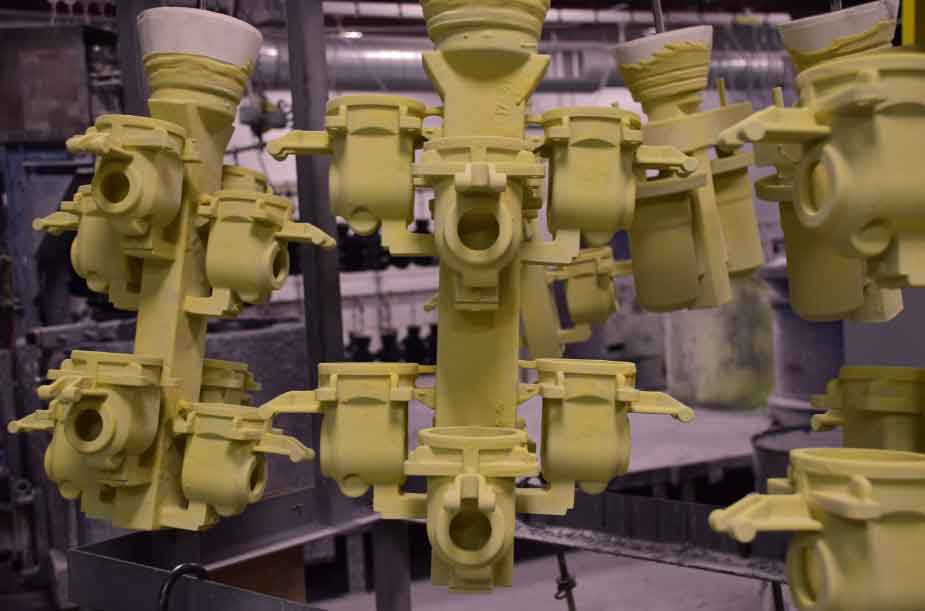
Investment casting, also known as lost wax casting, has seen significant advancements and innovations in modern manufacturing. These advancements have expanded the capabilities, efficiency, and versatility of investment casting, opening up new applications and pushing the boundaries of what can be achieved. In this response, we will explore some of the key advancements and applications in investment casting in recent years.
- Additive Manufacturing and 3D Printing: The integration of additive manufacturing, specifically 3D printing, has revolutionized investment casting. 3D printing allows for the direct production of wax patterns, eliminating the need for traditional pattern-making processes. This enables faster prototyping, reduced lead times, and increased design flexibility. Additionally, 3D printing technology allows for the creation of complex internal geometries, lattice structures, and lightweight designs that were previously difficult or impossible to achieve.
- Advanced Materials and Alloys: Modern investment casting has expanded its range of materials and alloys, including superalloys, nickel-based alloys, titanium alloys, and various other exotic materials. These advanced materials offer exceptional strength, corrosion resistance, heat resistance, and other desirable properties, making investment casting suitable for critical applications in aerospace, automotive, energy, and medical industries. The ability to cast these materials with precision and accuracy provides new opportunities for component optimization and performance enhancement.
- Simulation and Process Optimization: The use of advanced simulation software and computer-aided engineering (CAE) tools has significantly improved the optimization of investment casting processes. Casting simulation software can predict and analyze various factors, such as mold filling, solidification, cooling rates, and potential defects. This enables engineers to optimize the process parameters, gating systems, and shell designs, leading to improved casting quality, reduced scrap rates, and enhanced dimensional accuracy.
- Automation and Robotics: Automation and robotics have been integrated into investment casting to enhance process efficiency, consistency, and repeatability. Automated wax pattern production, shell dipping, shell drying, and shell removal processes have streamlined production workflows, reduced labor costs, and improved overall process control. Robotic systems can handle intricate tasks, such as wax assembly, pattern inspection, and shell coating, with precision and speed, ensuring consistent quality and reducing human error.
- Advanced Quality Control: Investment casting has benefited from advanced non-destructive testing (NDT) techniques for quality control. X-ray and CT scanning technologies allow for comprehensive inspection of cast components, detecting internal defects, porosity, and dimensional deviations without destroying the part. These techniques provide critical feedback for process optimization, ensuring that components meet stringent quality requirements.
- Multi-Material and Hybrid Casting: Innovation in investment casting has extended to multi-material and hybrid casting techniques. This involves combining different materials or alloys in a single component during the casting process. For example, ceramic or metallic cores can be incorporated to create hollow structures, cooling channels, or integrated functional elements within the cast component. This approach enables the production of complex parts with localized material properties, reducing the need for subsequent assembly processes.
- Sustainability and Material Efficiency: Efforts have been made to improve the sustainability of investment casting processes. Technologies such as ceramic shell reclamation and recycling, wax pattern recycling, and energy-efficient melting techniques help minimize waste, reduce environmental impact, and optimize material usage. Additionally, advancements in process control and optimization contribute to reduced scrap rates and improved material efficiency.
Applications of these advancements in investment casting have led to expanded usage in industries such as aerospace, automotive, energy, medical, and consumer goods. Investment casting is now used to produce complex engine components, turbine blades, orthopedic implants, jewelry, intricate decorative pieces, and more. The combination of innovation, technological advancements, and expanding material capabilities continues to drive the growth and relevance of investment casting in modern manufacturing.
Investment casting has evolved significantly through advancements in additive manufacturing, materials, simulation, automation, quality control, multi-material casting, and sustainability practices. These innovations have expanded the applications of investment casting and enabled the production of complex, high-performance components with improved efficiency, precision, and sustainability. Investment casting remains a vital process in modern manufacturing, contributing to the production of critical components across various industries.
